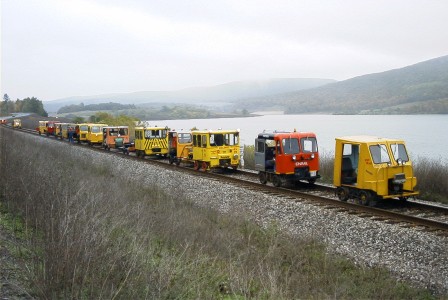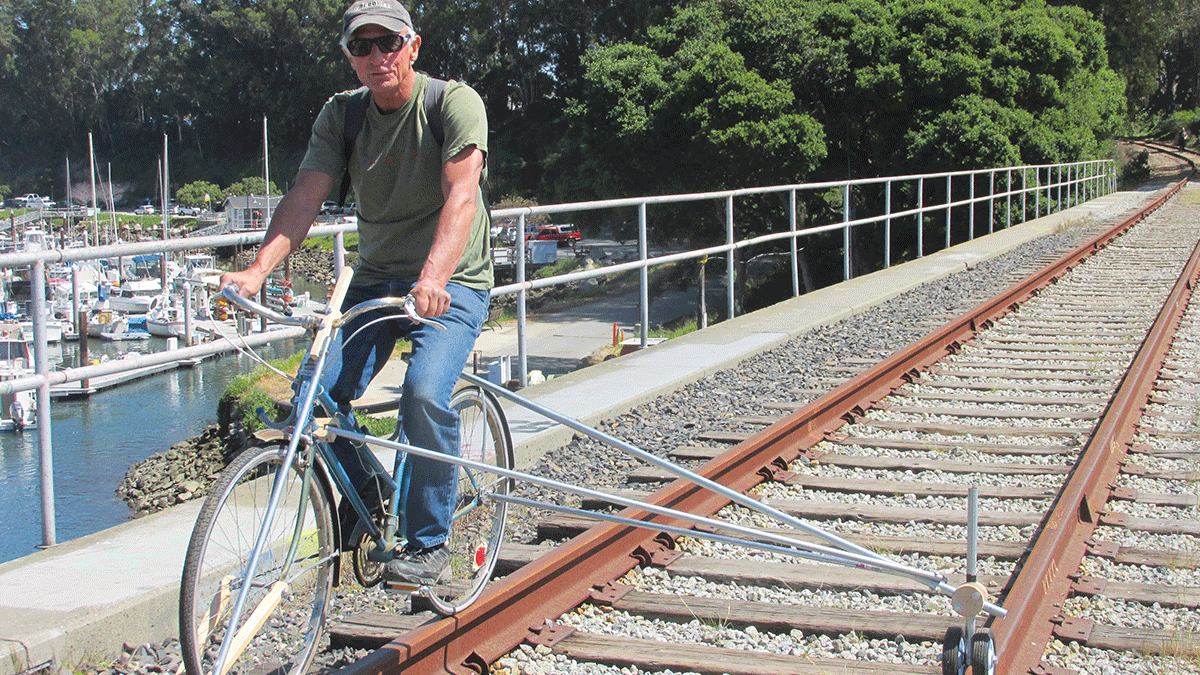Then there’s the safety and legality of being on train tracks. The OP speaks of “unused railroad tracks,” but how sure are you that they are truly decommissioned tracks that no train will ever be on? They might seem unused but could technically still be considered active. And railroads and law enforcement take trespassing on railroad lines very seriously.
Even if the line you are talking about is truly inactive, who owns that property? Do you have permission to be there? Would you be trespassing?
If you want to travel along train tracks at a leisurely pace, safely and legally, you might look into the hobby of rail cars (not to be confused with privately owned railroad cars).

Railroad motorcars or ‘Speeders’ were used by the railroads to inspect the many miles of track for defects and to handle track maintenance.
North American Railcar Operators Association – ‘NARCOA’ - is a non-profit group dedicated to the preservation and the safe, legal operation of railroad equipment historically used for maintenance of way. The key phrase in this description is “safe, legal operation”. NARCOA members operate their own privately owned railroad motorcars on railroads throughout the United States and Canada during railroad-sanctioned NARCOA excursions. Members travel through some of the most picturesque areas of the North American continent. Excursions vary from one-day, 25 mile trips between two towns to multi-day, 1000 mile trips covering several states or provinces! These excursions are organized by NARCOA Excursion Coordinators. All excursions are approved by and coordinated with participating railroads.
I had a friend who was into this many years ago. Unfortunately, I was never able to join him on an excursion, but the clubs seem open to people who would like to try it out and join someone who has an open seat. IOW, you don’t have to get your own rail car to try it out. And if you end up getting hooked, it’s not tremendously expensive.
Running a speeder costs considerably less than boating or golfing although some think it’s a hot, noisy and smelly hobby! Some members also own and operate more modern Hy-Rail vehicles [standard road vehicles with retractable guide wheels that can operate on road or rail].
However, more to the point of the OP, while looking for the links above, I found this:
What is a Rail Explorer?
A rail explorer is a pedal powered vehicle that rides on railroad tracks. They have 4 steel wheels, hydraulic disc brakes, pedals for each seat, and are comfortable, fun and easy to ride. Although the rail explorers require pedalling, the magic of steel wheels on steel rails makes the experience very different from riding a regular bicycle. There is no need to carefully watch the road ahead, there is no need to steer and riding is hands free - making it easy to take photographs and video as you roll along. Choose either the Tandem Rail Explorer (2 seats) or Quad Rail Explorer (4 seats) for your ride.
…
Rail Explorers only operates on rails with the permission of the railroad. Our staff co-ordinate closely with the railroad managers and dispatchers to ensure that there are no other vehicles on the rails during our operations. Active railroads are extremely dangerous and unauthorised access is strictly forbidden.
They operate in Amador, CA; Boone, IA; Lexington, KY; Cooperstown, NY; Phoenicia, NY; and Newport, RI.
My wife and I are considering doing this with our grandkids next spring!


